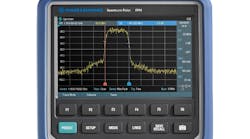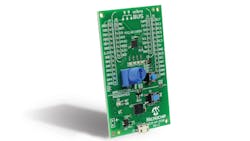The cloud is more than just a target for the Internet of Things (IoT). It is also a platform for providing online development tools. This trend is only increasing. It has been used for enterprise solutions and mobile app development, but increasingly embedded developers can take advantage of these tools, as well.
Microchip's MPLAB Xpress (Fig. 1) brings cloud-based PIC microcontroller development tools to developers. It is a complete MPLAB X integrated development environment (IDE) environment. This includes debugging hooks to local devices. There are some differences, but these tend to be a consideration for power users.
MPLAB Xpress has a guest mode that lets you get started checking out the platform immediately. You can export a project, but you will need a free account to save projects online. The account comes with 10 Gbytes of storage. It is also possible to share projects between accounts and there is an online community and support.
Those familiar with MPLAB X will feel right at home with MPLAB Xpress. It uses the same compilers, and the standard support provides status information from the Pro compiler version that typically provides more optimized code that is usually more compact. The Pro version output is available as a paid option, but this information lets developers know what advantage there may be to switching. The Pro version will also be available on a subscription basis that could reduce development costs.
The environment works with Microchip's MPLAB Code Configurator (MCC) 3.0. This tools is used to create a project and source code based on a selection of peripherals. MCC reduces the time to get started with a fresh project. Of course, there are a number of sample projects that can be used as a starting point as well.
The online IDE provides archive support with up to 10 revisions. Hooks for online debug support are provided by a downloadable, Windows-based USB bridge. This supports platforms like Microchip's PICkit3 and the Curiosity development systems.
Like MPLAB X, MPLAB Xpress supports Microchip's Core Independent Peripheral technology that includes the Configurable Logic Cell (CLC) support. CLC allows a peripheral event to initiate an action in another peripheral such as a timer initiating an ADC (analog to digital converter) data capture.
One of the first platforms to be supported by MPLAB Xpress is the MPLAB Xpress Evaluation Board (Fig. 2). It is based on an 8-bit PIC16F18855 microcontroller. It has a few buttons, LEDs and a potentiometer plus a MikroElectronica MikroBUS header. The MikroBUS includes serial interfaces, an interrupt and a PWM output. MikroBUS modules are available for all types of peripherals, from motor control to wireless and GPS adapters. MPLAB Xpress works with other Microchip and Microchip-based boards.
Developers can lock down versions of the development tools for their projects. This is critical for production work where a known toolset is a requirement, especially for software maintenance.
Many developers will still utilize PC-based versions of MPLAB X because of some features that are not found in the web-based alternative. One major feature is unlimited breakpoints in the debugger. Another is more advanced code repository support. Projects can be moved in either direction so developers can easily migrate between platforms.
MPLAB Xpress 8-bit support is available now with 16- and 32-bit support to follow.
Web-based tools may not fit the needs of all developers but they are an ideal way to evaluate Microchip's hardware and software. They also minimize set up and support that many organizations would rather forego.
Free development software tools have become a defacto standard for microcontrollers. It is likely that cloud-based tools will follow suit.


